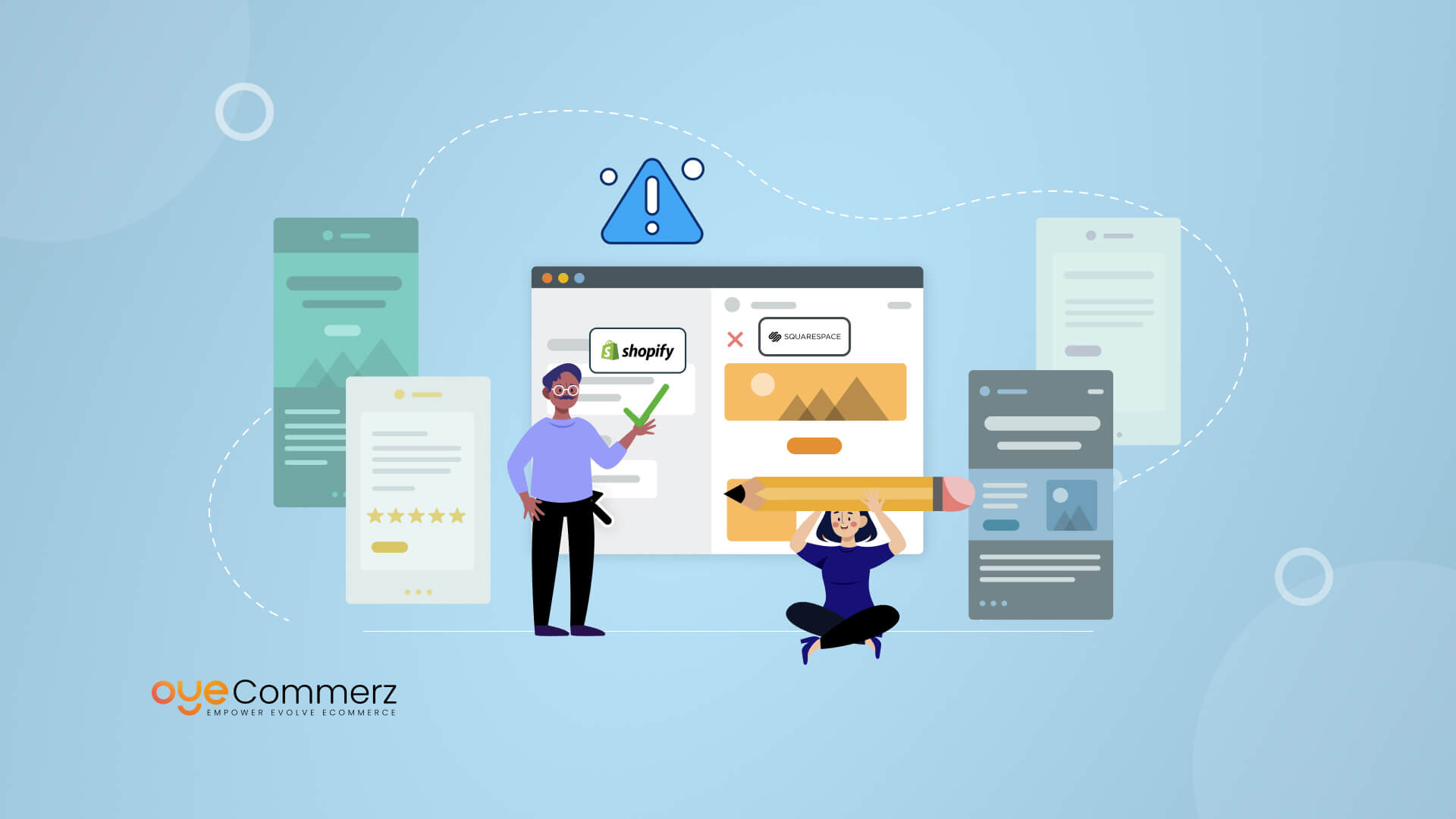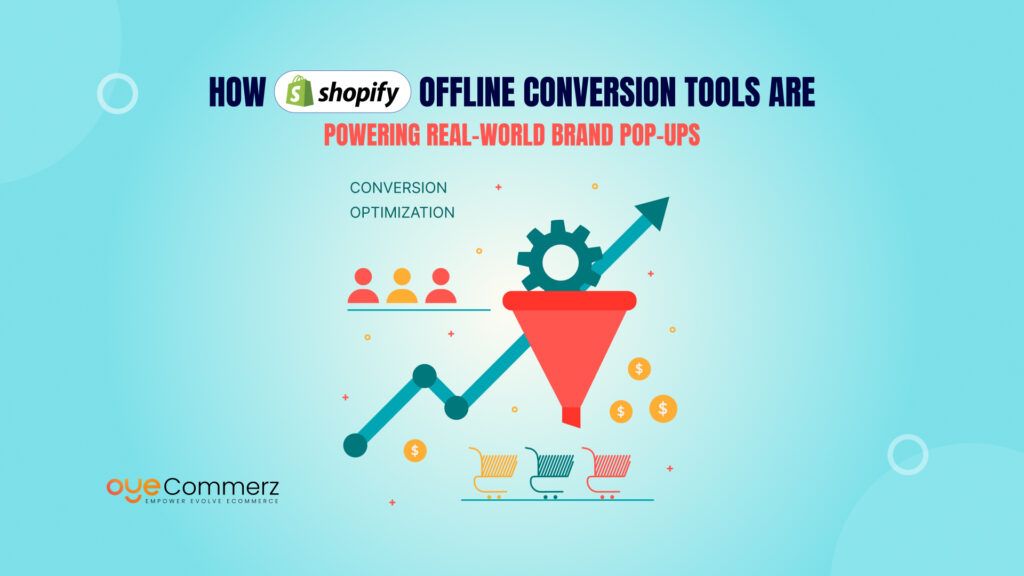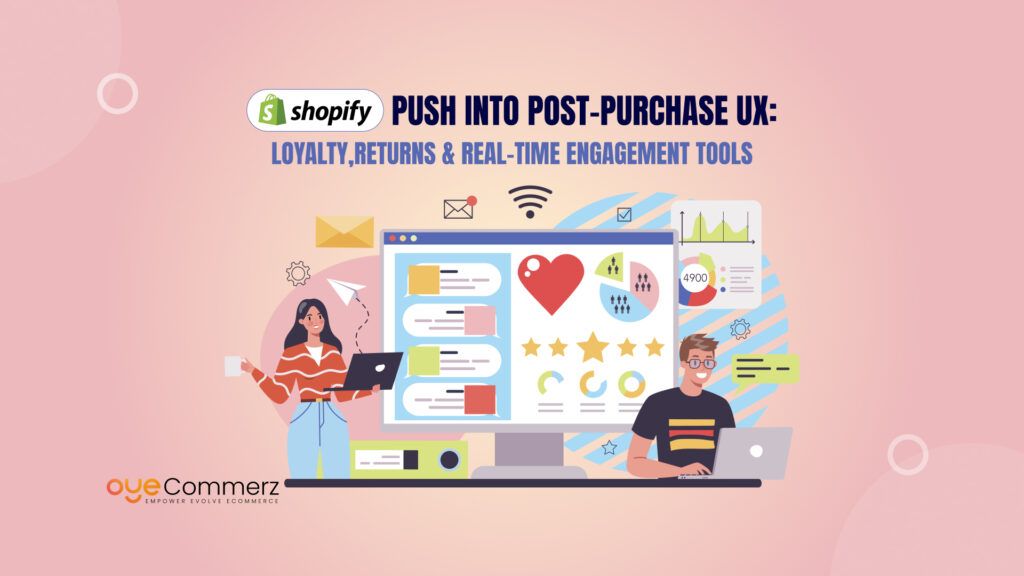If you’re an existing Squarespace business owner, you might feel stuck with templates that don’t fully reflect your brand or meet your growing needs. Did you know that businesses that customize their e-commerce platforms see up to 30% higher customer retention? It’s time to explore why many like you are choosing to move from Squarespace to Shopify.
Squarespace’s template-based designs are great for starting out but often limit flexibility, making it hard to scale or add unique features. Shopify, on the other hand, offers a highly customizable platform, advanced integrations, and tools designed for growth.
With Shopify, you can break free from design limitations and unlock powerful features that scale with your business. From customizable themes to robust e-commerce tools, Shopify empowers you to build a store that evolves with your vision.
Table of Contents
ToggleUnderstanding the Limitations of Squarespace Templates
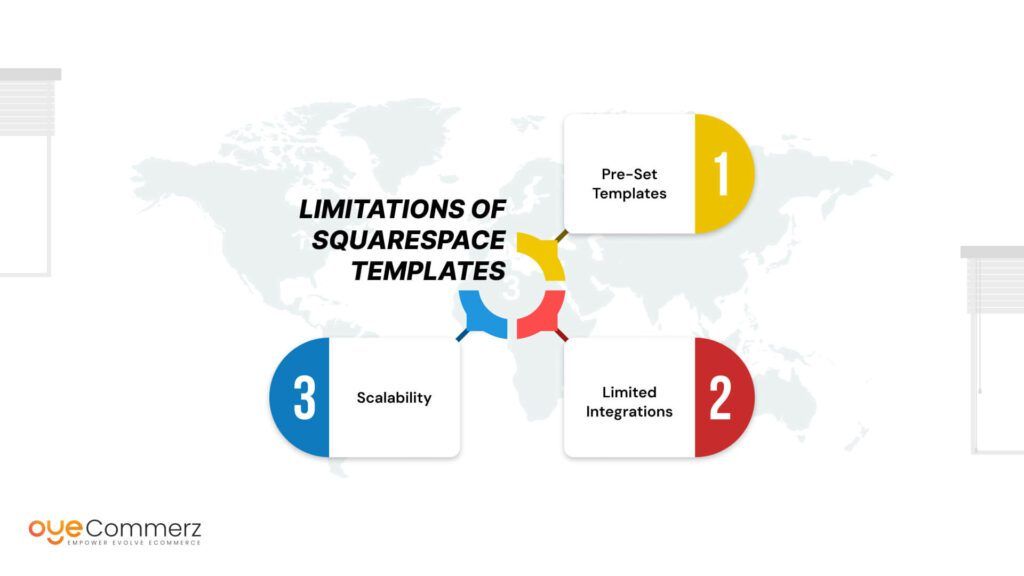
When you first launch your online store, Squarespace’s templates might seem like the perfect solution. They’re sleek, easy to use, and give you a quick way to start selling. But as your business grows, these templates can start to feel more like a box you’re stuck in than a foundation for success. Let’s break down why.
The Problem with Pre-Set Templates
Squarespace’s template-based approach works well for beginners, but it offers limited design flexibility. Templates are built with a “one-size-fits-all” mindset, which means you can’t always make your store look or function exactly the way you want. For modern entrepreneurs with unique brands, this can be frustrating.
For example, if you want to rearrange certain elements, add custom features, or create a completely fresh design, Squarespace often falls short. You’re stuck working within the confines of the template, even when your business vision requires more.
Limited Integrations Hold You Back
In today’s fast-paced e-commerce world, integration is everything. Squarespace offers basic integrations, but its ecosystem is nowhere near as vast or dynamic as Shopify’s. If you need advanced marketing tools, third-party apps, or custom workflows, you might find yourself out of luck.
For instance, many businesses struggle with integrating tools like customer relationship management (CRM) software or analytics platforms on Squarespace. This makes it harder to streamline operations or gather insights that are essential for scaling.
Scalability Challenges
As your business grows, so do your needs. Squarespace is great for small shops or service-based businesses, but it doesn’t have the robust infrastructure for high-traffic, high-revenue stores. It can’t handle the demands of scaling without significant performance issues.
Picture this: you’re running a thriving e-commerce business, but your website crashes during a holiday sale because it can’t handle the surge in visitors. That’s a nightmare no entrepreneur wants to face.
Why Shopify Outshines Squarespace for Customization
If you’re ready to take your e-commerce game to the next level, Shopify is the platform that lets you create a store as unique as your brand. Unlike Squarespace, which limits you to rigid templates, Shopify offers unmatched flexibility for design and development. Let’s dive into what makes Shopify the go-to choice for entrepreneurs who crave freedom and customization.
Unmatched Flexibility for Design and Development
Shopify allows you to customize nearly every aspect of your online store. Whether you’re tweaking colors and fonts or designing a completely bespoke experience, Shopify makes it possible. Unlike Squarespace’s locked-in templates, Shopify’s themes are starting points—not limits. You can mold your site to match your brand’s vibe and vision, giving you complete creative control.
For example, if you want a homepage that tells a bold story or product pages with unique layouts, Shopify has the tools to make it happen. Plus, its user-friendly backend ensures you don’t need to be a coding wizard to make changes.
A Versatile Theme Ecosystem
Shopify’s theme store offers a range of paid and free themes, all designed with modern e-commerce in mind. Each theme is responsive, ensuring your store looks stunning on any device—essential for Gen Z entrepreneurs and their on-the-go customers.
With paid themes, you unlock premium designs and advanced features tailored for specific industries. Free themes are perfect for getting started while still offering room for personalization. The best part? You can switch themes or build on an existing one without starting over, something Squarespace doesn’t handle as gracefully.
The Power of Shopify Liquid
For those who want even deeper customization, Shopify Liquid a powerful templating language lets developers fine-tune every detail of your store. From creating personalized customer experiences to building dynamic product pages, Liquid opens up endless possibilities.
Think of Liquid as your secret weapon for standing out. Whether it’s adding real-time stock updates, creating a custom checkout flow, or showcasing unique product recommendations, Shopify’s advanced tools let you go beyond the basics.
Why It Matters
Your store should feel like your brand, not a cookie-cutter copy of someone else’s. Shopify’s flexibility empowers you to create something that reflects your vision and meets your customers’ needs. If you’re serious about growing your business, Shopify is the platform that lets your creativity shine.
Technical Capabilities of Shopify for Custom E-Commerce
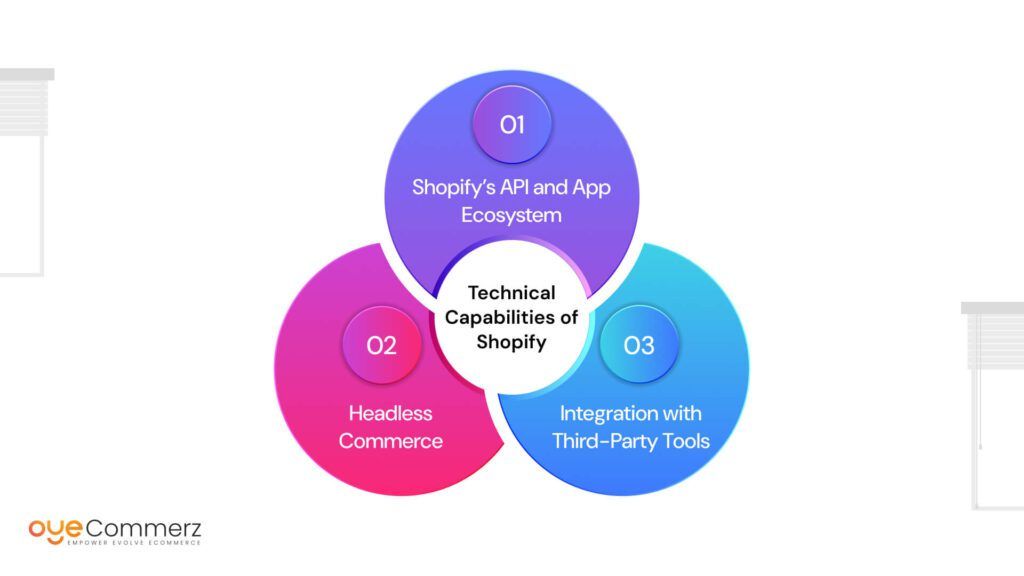
If you’re running an e-commerce business in the modern digital era, you know that flexibility and scalability aren’t optional they’re essential. Shopify stands out as a platform that’s not only easy to use but also loaded with advanced technical capabilities. Here’s why it’s the ultimate tool for creating a custom e-commerce experience.
Shopify’s API and App Ecosystem: Build Exactly What You Need
Shopify’s robust API and app ecosystem give you the power to customize your store’s functionality to match your unique needs. Whether you want to add a loyalty program, advanced analytics, or dynamic pricing models, Shopify’s app store offers thousands of apps to make it happen.
For those who want even more control, Shopify’s API enables custom integrations and features. For example, you could use the API to connect your store with your warehouse system for seamless inventory management or build a personalized shopping experience for your customers. It’s all about making your store work for you.
Headless Commerce: The Future of E-Commerce
For US-based enterprise businesses, headless commerce architecture is a game-changer. Shopify supports this innovative approach, where the front-end (what customers see) is decoupled from the back-end (where data lives).
This setup lets you create custom storefronts on any platform—whether it’s a mobile app, website, or even a smart device. Imagine offering a completely unique shopping experience on your app that perfectly complements your website, all while drawing from the same back-end data.
Seamless Integration with Third-Party Tools
Shopify plays well with others, making it easy to integrate with third-party tools your business relies on. Need to connect your CRM for customer tracking, your ERP for inventory management, or your preferred payment gateway for transactions? Shopify’s integrations make it seamless.
For instance, you can use tools like Salesforce or HubSpot to track customer data or integrate QuickBooks to simplify accounting. Shopify’s flexibility ensures your systems work together, saving you time and streamlining operations.
How Shopify Apps Boost Business Performance
One beauty brand added a Shopify app to manage subscription services, leading to a 25% increase in recurring revenue. Another store integrated an AI-powered product recommendation app, boosting sales by 15%. These are just a few examples of how Shopify’s ecosystem helps businesses thrive.
Shopify’s technical capabilities let you build a store that’s not only functional but also future-proof—ready to grow with your ambitions.
Advanced SEO and Marketing Tools on Shopify
For US-based businesses aiming to grow their online presence, SEO and marketing tools are essential. While Squarespace offers basic options, Shopify takes it to the next level with advanced features designed to help you rank higher and reach more customers.
Why Squarespace Falls Short on SEO
Squarespace’s SEO tools are beginner-friendly but limited. It allows for basic tasks like editing meta titles, descriptions, and alt text, but lacks deeper customization. For instance, its inability to handle advanced schema markup or automatically generate dynamic meta tags can hold back businesses competing in a crowded e-commerce space.
For entrepreneurs trying to rank in competitive markets, these limitations can feel like a glass ceiling. You’ve done everything you can, but your site still struggles to break through.
Shopify’s Built-in SEO and Marketing Features
Shopify, on the other hand, is built for growth. Its SEO tools are robust and scalable, giving you control over critical elements like URL structures, canonical tags, and dynamic sitemaps. Shopify also automatically optimizes site speed, which is crucial for search engine rankings.
Beyond SEO, Shopify’s built-in marketing tools make promoting your store a breeze. From email marketing campaigns to automated abandoned cart reminders, Shopify simplifies outreach. Need social proof? Add customer reviews or integrate with social media platforms to showcase real-time engagement.
The Power of Third-Party Integrations
Shopify’s app store adds another layer of power to your marketing efforts. Whether it’s integrating with Google Analytics, connecting to Facebook Ads, or using SEO-specific tools like Plug in SEO or Smart SEO, the options are endless. These apps provide actionable insights and automation to save you time while improving performance.
For instance, a clothing brand might use a Shopify app to create targeted email campaigns based on customer behavior, boosting repeat purchases. Or a skincare business could integrate with Instagram Shopping to turn followers into customers directly.
Reaching a Broader Audience
Shopify’s advanced tools help US-based businesses tap into larger audiences by connecting them with the right channels. Its SEO capabilities ensure you rank higher on Google, while marketing tools like Google Ads integration and multi-channel sales let you reach customers where they shop most.
With Shopify, you’re not just building a store—you’re building a brand that’s visible, scalable, and ready to grow in the competitive online marketplace.
Enhanced Scalability and Performance with Shopify
When it comes to running an online store, performance and scalability are critical. You need a platform that can handle growth, provide fast load times, and keep your site secure. That’s where Shopify excels. Let’s break down why Shopify stands out for performance and how it supports businesses looking to grow—especially in the competitive US market.
Shopify’s Infrastructure: Reliable, Secure, and Fast
Shopify’s infrastructure is built for high performance. The platform is hosted on fast, scalable servers that are optimized for speed, meaning your store will load quickly even during peak traffic times. Shopify’s uptime is also top-notch, with a 99.99% guarantee. This means your customers won’t be left waiting for a site that’s down—something crucial for maintaining trust and avoiding lost sales.
Security is another area where Shopify excels. The platform is PCI DSS Level 1 compliant, which is the highest security standard in the payment card industry. Shopify protects sensitive customer data and transactions, so you can focus on growing your business without worrying about breaches.
Why Shopify Plus is Perfect for Growing US-Based Businesses
As your business grows, Shopify Plus offers even more advantages. Shopify Plus is a premium version of the platform, designed for high-volume merchants and businesses experiencing rapid growth. With Shopify Plus, you get advanced features like customizable checkout processes, access to an exclusive API, and enhanced automation tools.
For US-based businesses, Shopify Plus is a game-changer. It supports enterprise-level operations and can handle large volumes of traffic and transactions, all while maintaining speed and performance. Whether you’re expanding your product line, entering new markets, or preparing for a holiday sales surge, Shopify Plus has the tools to scale with your business.
Shopify vs. Squarespace: Transaction Handling and Load Times
When comparing Shopify to Squarespace, it’s clear that Shopify is built for performance. Shopify is specifically designed for e-commerce, meaning its infrastructure is optimized for handling transactions and high traffic volumes. Whether you’re running sales campaigns or hosting thousands of products, Shopify ensures smooth and fast transaction processing, even during peak times.
Squarespace, while a great platform for simple websites, struggles when it comes to handling large-scale e-commerce operations. Its transaction handling is slower, and its infrastructure is not as robust as Shopify’s, which can lead to slower load times and potentially missed sales. For example, Shopify’s quicker page load times can directly impact your SEO ranking and customer satisfaction, which is crucial for your business success.
Migrating from Squarespace to Shopify: A Roadmap
Making the switch from Squarespace to Shopify can feel like a big leap, but with the right roadmap, it’s a smooth journey. Whether you’re upgrading to unlock better features or scaling up your online store, migrating to Shopify opens up a world of customization and growth. Here’s a simple guide to help you through the migration process.
Key Steps in Migrating Your Store
Migrating from Squarespace to Shopify isn’t just about transferring products from one platform to another. It involves a few important steps to ensure your store runs smoothly on Shopify. First, you’ll need to back up all your data from Squarespace, including products, customer details, and past orders. Then, you’ll create your new Shopify store and begin importing your data into Shopify.
There are several tools and apps that can help with this migration, or you can work with an expert to ensure everything is transferred correctly. The migration process will also involve setting up your domain and redirecting URLs so that your SEO rankings and links aren’t lost during the move.
Importance of Data Migration
One of the most crucial steps in the migration process is data migration. You don’t want to lose your product listings, customer information, or order history. Shopify makes this process easier with its import tools that can transfer your products, customer data, and order information.
For product migration, you’ll want to ensure that all your product descriptions, images, and prices are correctly imported to maintain consistency. Customer data is equally important—preserving order history, customer contact info, and preferences will ensure a smooth transition for returning customers.
By taking the time to carefully migrate your data, you’ll avoid any headaches down the road and ensure your Shopify store is ready for business right away.
Customizing Shopify Themes to Fit Your Brand
Once your store is set up and your data is migrated, the next step is to customize your Shopify theme to make your store feel like home. Shopify offers a wide range of free and paid themes, each designed with flexibility in mind. You can choose a theme that reflects your brand’s style and tweak it to fit your exact needs.
For a truly unique store, you can customize your theme further using Shopify’s Liquid templating language, allowing you to change layouts, design elements, and functionality. Whether you want to change colors, adjust fonts, or add custom features, Shopify makes it simple to personalize your store’s look and feel.
Challenges Overcome with Shopify
As a business owner, you’ve likely hit some walls with Squarespace’s limitations. Fortunately, Shopify offers solutions to many of those challenges, giving your store the flexibility it needs to grow and thrive.
Squarespace vs. Shopify: Overcoming Template Limitations
Squarespace’s templates are beautiful but can feel restrictive when your business outgrows them. You might have run into issues with limited design options, a lack of customizability, or trouble integrating third-party apps. Shopify overcomes these restrictions with its flexible theme ecosystem. You can easily customize your design or even build your own unique theme. Plus, with Shopify Liquid, a robust templating language, you have full control over your site’s look and feel.
Omnichannel Sales Made Easy
As an entrepreneur, you probably want to sell across multiple platforms—social media, online marketplaces, and in-person. Shopify makes this easy with its omnichannel sales capabilities. You can integrate your store with Facebook, Instagram, Amazon, eBay, and even physical point-of-sale systems. This seamless integration lets you manage all your sales channels from one dashboard, providing a more efficient way to track orders, inventory, and customer data.
Why Choose Shopify for Your US-Based Business
If you’re a US-based entrepreneur looking to scale your business, Shopify offers a competitive edge that’s hard to beat. Let’s dive into why Shopify is a top choice for businesses like yours.
Shopify’s Competitive Edge
Shopify stands out in the e-commerce space because it’s specifically designed for online stores. Whether you’re just starting out or running a high-volume business, Shopify provides all the tools you need to manage and grow your business efficiently. It’s known for being user-friendly, customizable, and packed with features to help you stand out in a crowded marketplace.
Shopify Plus for Enterprise Businesses
For enterprise-level businesses, Shopify Plus is a game-changer. Shopify Plus offers advanced features like customizable checkouts, exclusive APIs, and enhanced automation, making it the perfect solution for US-based businesses looking to scale rapidly. It’s built for high-volume sales and can handle large amounts of traffic without compromising on performance. With Shopify Plus, you also get dedicated support and faster response times, so you can focus on growing your business without worrying about tech issues.
Tailored Solutions for the US Market
Shopify is deeply integrated into the US market, supporting all the local payment gateways, tax calculations, and shipping methods that US businesses need. You can easily sell across different channels like Instagram, Facebook, and Amazon, and manage everything from one dashboard. Shopify also helps you meet US-based customer expectations, from fast shipping options to local payment methods.
Why Partner with Experts for Migration and Customization
Migrating and customizing your Shopify store can be complex, and having professional support is key to ensuring a smooth transition. Experts help with everything from data migration to creating a unique, high-performing store tailored to your needs. At Oyecommerz, we specialize in helping US-based businesses like yours migrate to Shopify and customize your store for maximum impact. Our team of Shopify experts ensures your store is set up for success, so you can focus on growing your business.
Ready to explore Shopify for your business? Request a consultation today!
Contact to Migrate your Squarespace Website to Shopify Now!
Conclusion
Shopify offers far more flexibility and scalability than Squarespace, making it the ideal platform for businesses ready to grow. With advanced customization options, powerful marketing tools, and seamless integrations, Shopify empowers you to create a unique, high-performing store tailored to your needs. Don’t let template limitations hold you back—move to a platform that can evolve with your business.
Get started with Shopify today and take your online business to the next level! Let’s unlock your store’s full potential.

